Stormwater
It's a Great Year for Replenishment!
Record Amounts of Stormwater Captured in the Region
After some of the driest years on record, California finds itself at the opposite end of the boom-and-bust cycle of a prolonged drought that has come to characterize the State’s water resources. While this climate whiplash caused storm damage and fears of spring snowmelt flooding, it also provided one of the best years for groundwater replenishment in WRD’s history.
Record-setting rainfall surpassed the yearly average of stormwater capture in the WRD service area, with over 76 billion gallons captured. This exceptional year has allowed our groundwater basins to rebound which creates resiliency in our water supply and can buffer against future dry years.
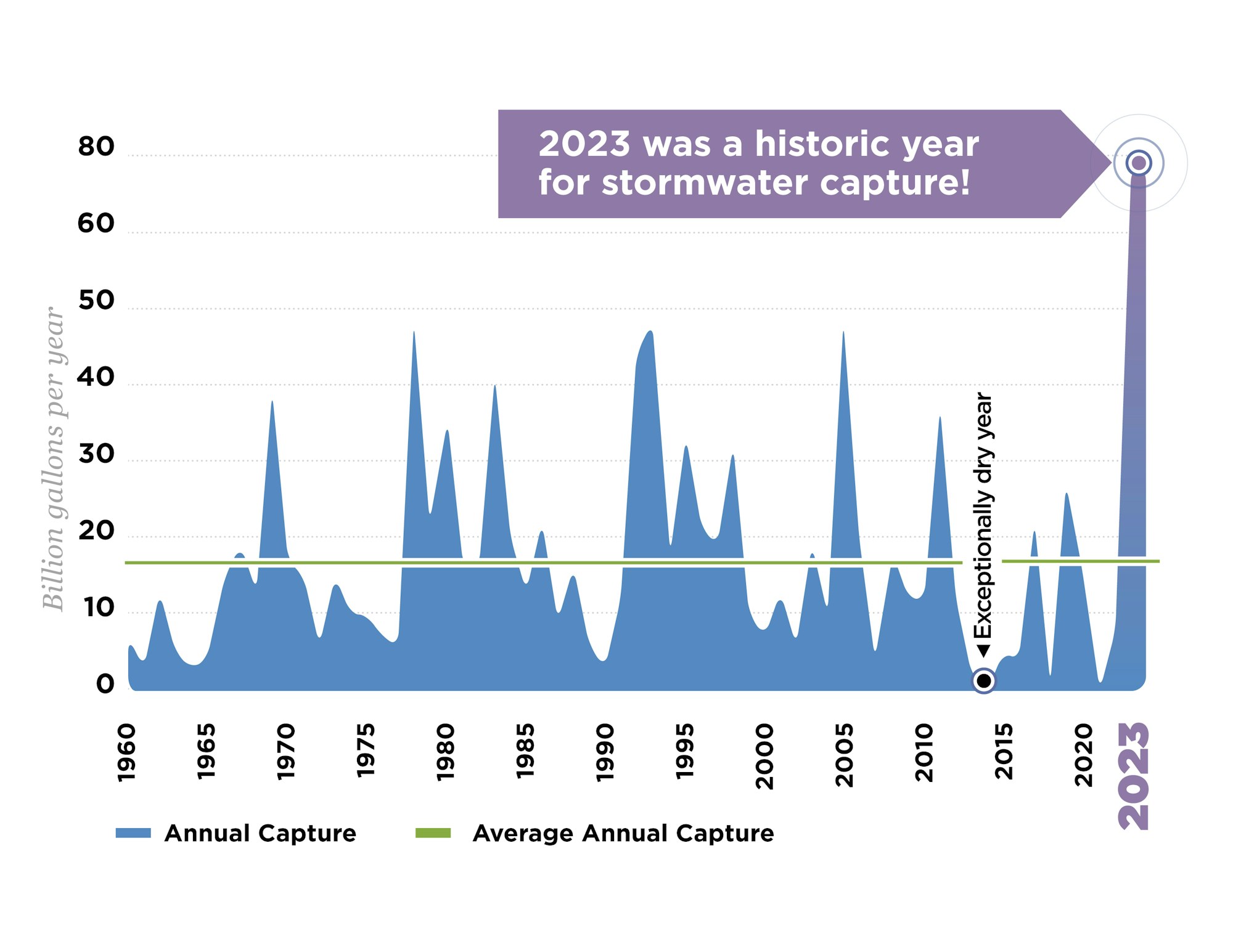
Through our partnership with the Los Angeles County Department of Public Works, we work hard to get as much water into the ground as safely as possible each year. We use stormwater when we can and have recycled water at the ready to meet the rest of our replenishment needs.
A Record Year for Precipitation
Locally, the storms of 2022/2023 resulted in the LA area receiving record-breaking rainfall amounts, as well as an abundance of snow in some of our local mountains.
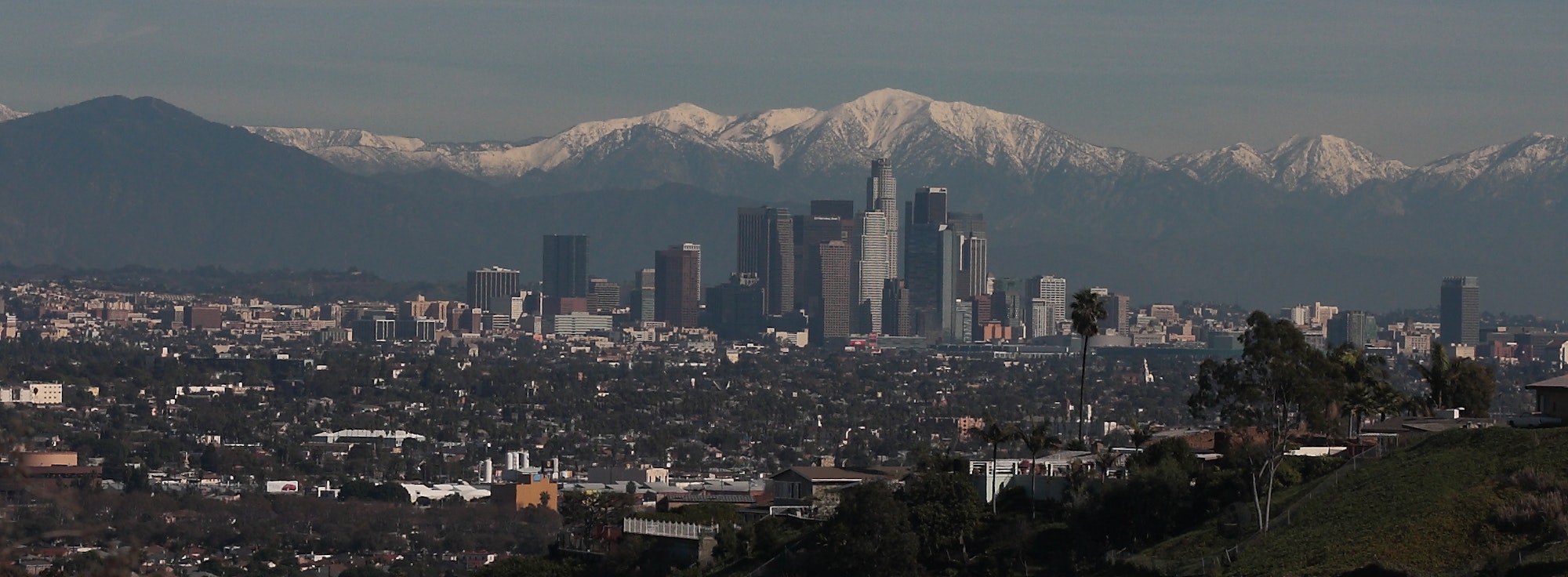
This has been excellent news for WRD as we manage the groundwater in the Central and West Coast Basins. The four million people who reside in the WRD service area consume around 72 billion gallons, or 220,000 acre feet, of groundwater annually and this accounts for about 50% of their water demands.
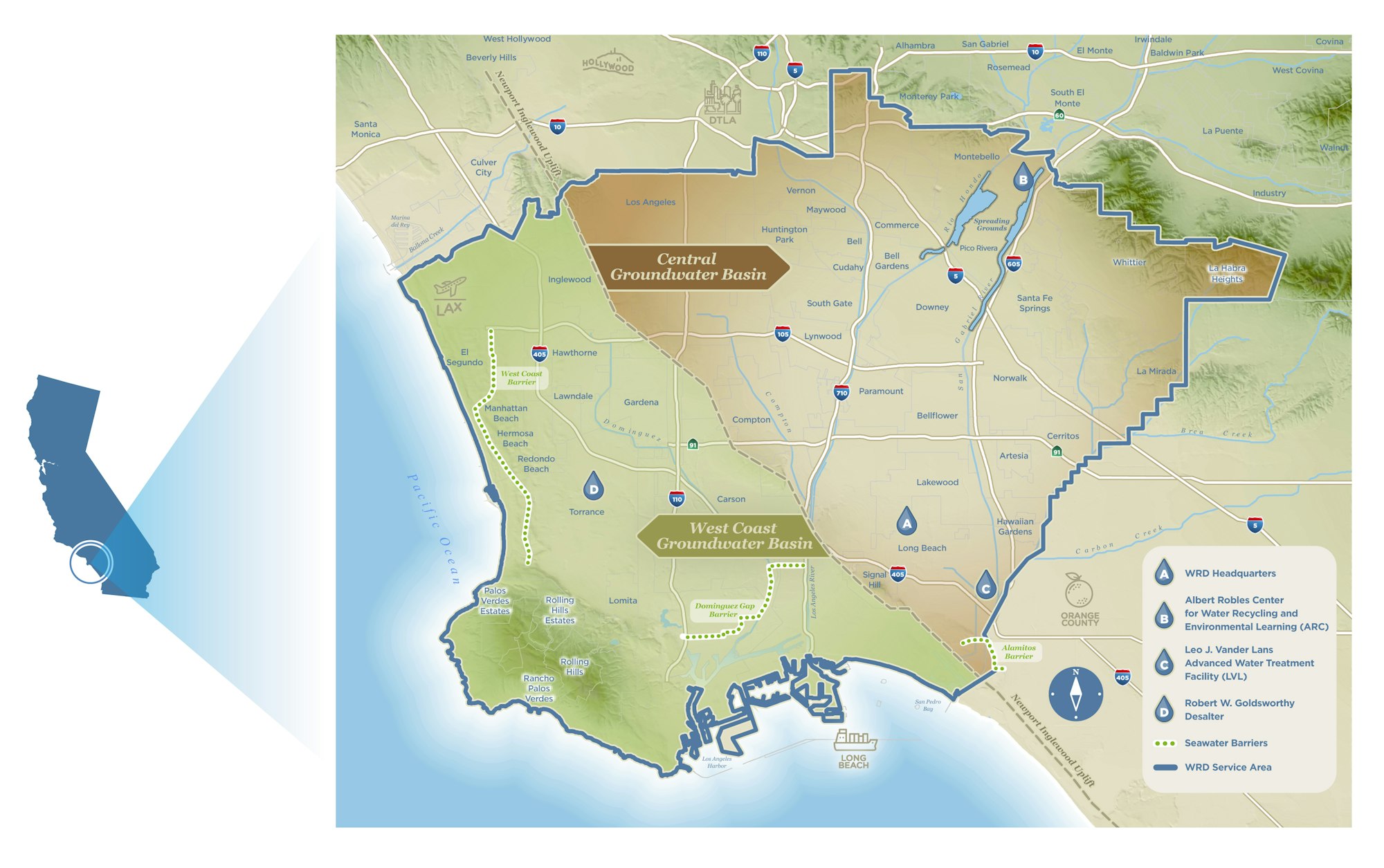
As outlined in the monthly WRD Groundwater Basin Update, the WRD Precipitation Index reports that for the 2022-23 Water Year, there were 25.72 inches of rainfall in the WRD service area (as of August 2023), which is 168% of normal.
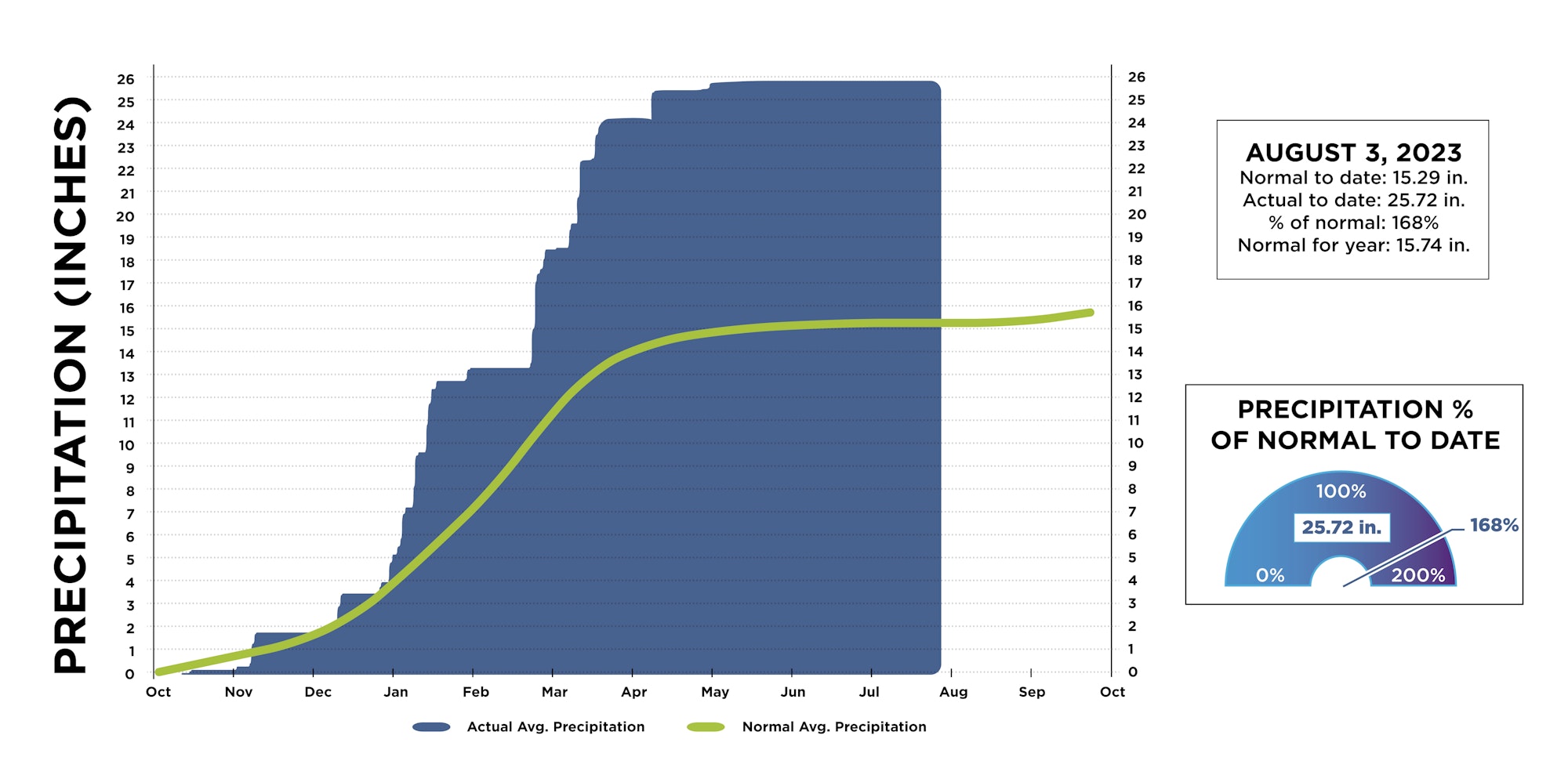
Regionally, the dams within the San Gabriel Watershed have also benefitted from the record-breaking precipitation. For example, at the end of March 2023 the Cogswell, San Gabriel, and Morris Dams were at 104%, 85%, and 73% capacity, respectively. The steady release of water from these upstream reservoirs continued flowing through June, providing a continued source of recharge to our groundwater basins. Further releases in the Fall are also expected.

Getting Water Into the Ground
WRD works with regional partners including the Los Angeles County Public Works (LACPW also known as the LAC Flood Control District) to get water into the ground using two important county-owned infrastructure systems: the San Gabriel and Rio Hondo Coastal Spreading Grounds in the City of Pico Rivera, and the Seawater Barrier Injection Wells located along the LA County coastline.
Since stormwater is not used at the seawater barrier wells, information about stormwater capture for WRD refers to surface spreading over the Central Basin.
WRD and its partners at LACPW have been able to capitalize on the abundant rainfall from this season and get large volumes into the ground. During the rainy season, the spreading grounds allow for water to soak in at a rate up to 256 million gallons (1,400 acre-feet) per day and 13 billion gallons (42,000 acre-feet) per month.

By controlling the releases into the spreading grounds to maximize infiltration, the WRD service area has more than tripled its annual average stormwater replenishment of 18 billion gallons (54,000 acre-feet) with over 76 billion gallons (234,475 acre-feet). This would not have been possible without the dedicated work of Los Angeles County Department of Public Works.
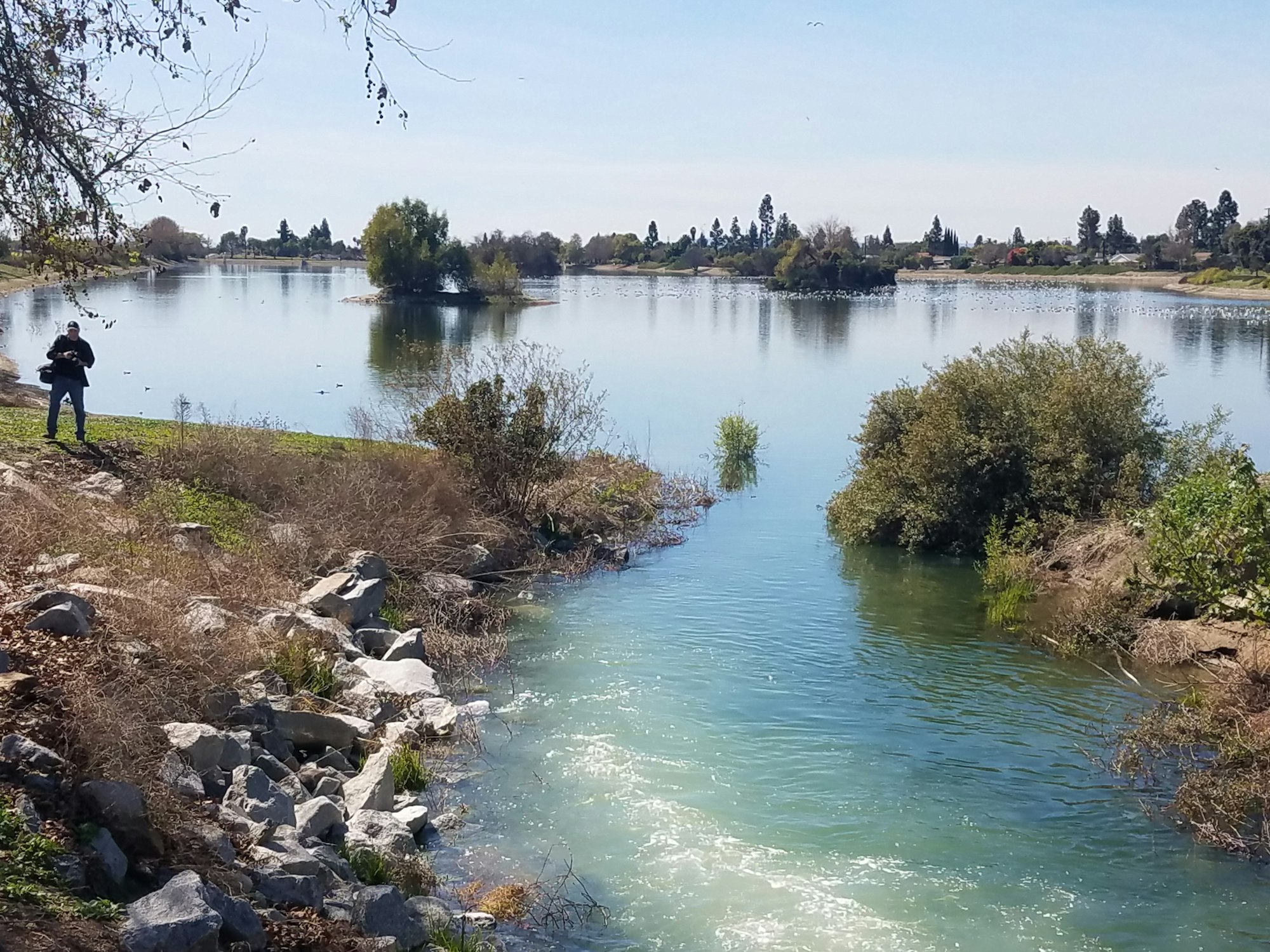

Healthy Basins Create Resiliency
Through its robust groundwater monitoring system, WRD assesses the basins’ health year-round. Increased replenishment with the record-breaking stormwater volumes this year has allowed the groundwater basins to rebound from previous years’ overdrafts and unprecedented recurring drought cycles.
For example, the current WRD basin operating range is at 97% of Optimum Quantity levels as of August 2023. This means we are well positioned to sustain current groundwater pumping rights and leaves room for future storage projects. This is a drastic change from one year ago when the basin was only at 20% of Optimum Quantity. The basins are recovering with this increase in just one year.
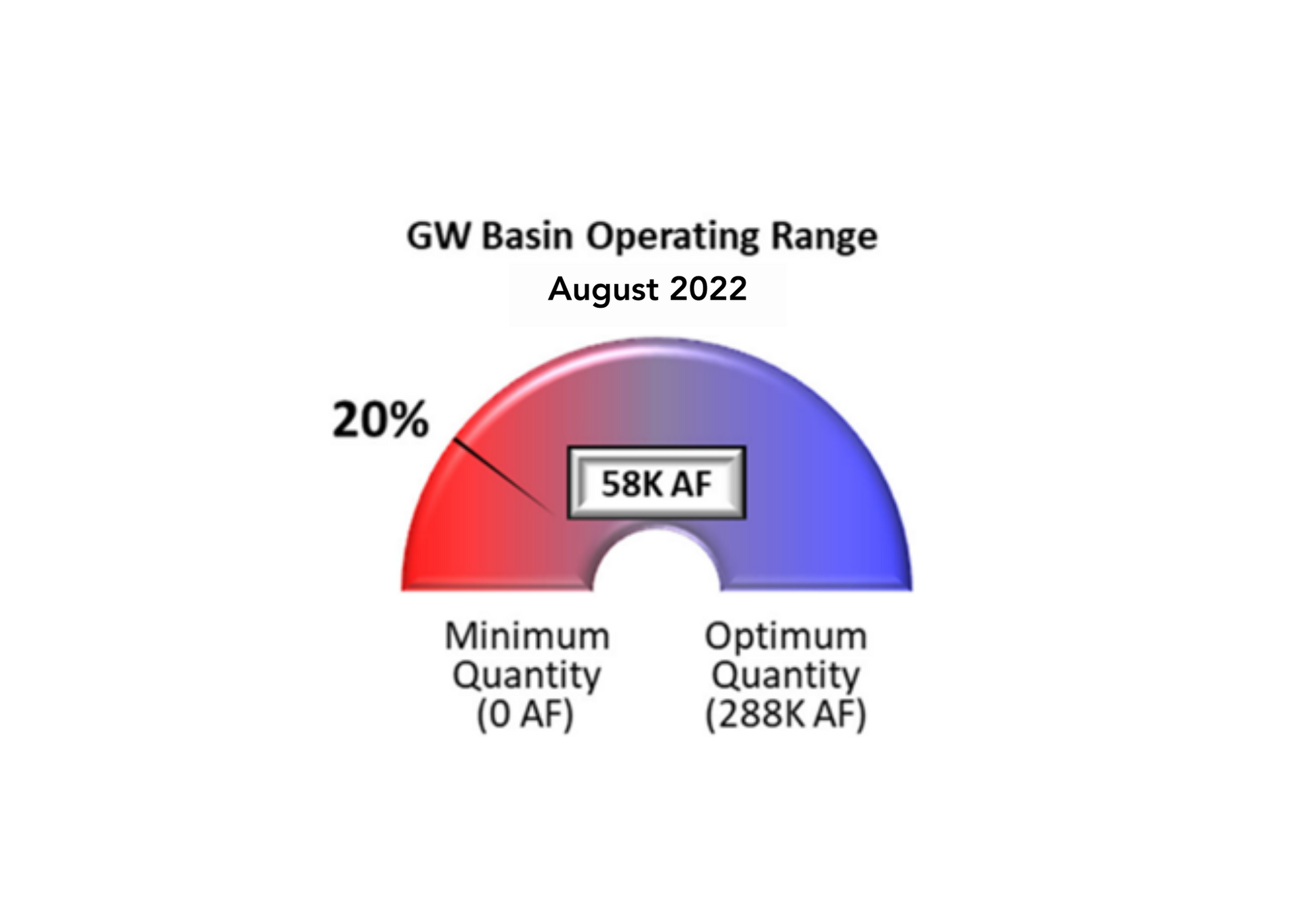
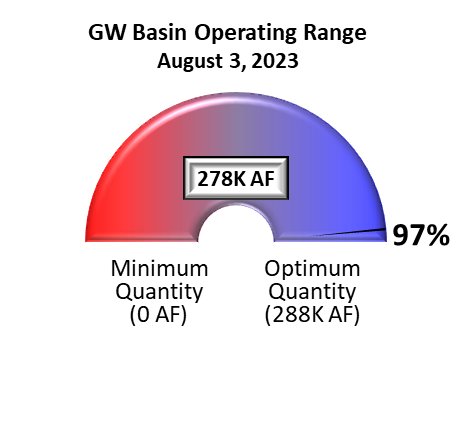
By storing this year’s bounty of rain in nature’s underground reservoirs, those who depend on the Central and West Coast Basins’ groundwater have shored up a local supply that will be available throughout the inevitable next rounds of drought. Still, there is a lot more space for further groundwater storage.
Even with the basins recovered there remains roughly 145 billion gallons, or 450,000 acre-feet, of storage space within the Central and West Coast Basins. WRD’s current projects and programs seek to fill this storage space with as much water as possible for use in future dry years. For more information, visit our WIN 4 ALL page.
Check out our one-pager on stormwater capture below.
WRD Record-breaking Stormwater Capture Flyer.pdf

